It takes entirely too long to drive to Cornwall, now that we live on the Isle of Wight.
Of course we knew that: the length of the drive is what precipitated our move from Plymouth to the Isle of Wight almost three years ago. We drove this distance every 2-3 weekends to pay increasing attention to Pete’s parents on the Island, and we eventually realised it made more sense to just move since we no longer needed to live in Plymouth for work.
Cornwall starts over the Tamar River bridge, only 15 minutes away when we lived in Plymouth. We could get to most of the places we loved to visit within about 90 minutes. Many, many Sundays were spent driving over the Tamar to stately homes and their gardens, beloved beaches, or coastal cliff walks. All involved a pub, café or farm shop afternoon repast of some kind. Sometimes we met friends or family, other times we just enjoyed a leisurely romp outside, always somewhere delightful.

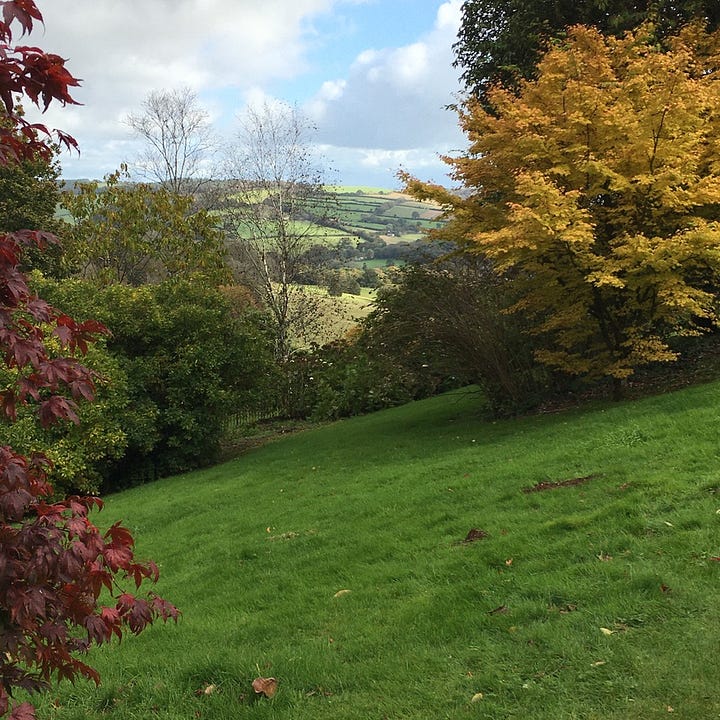
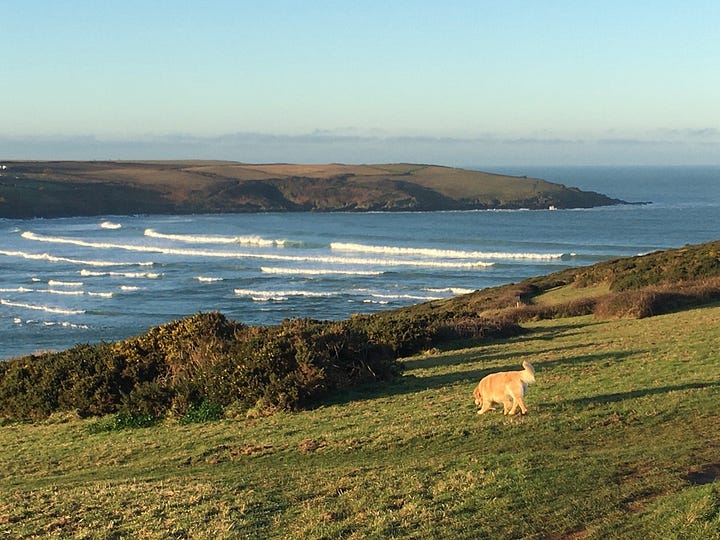
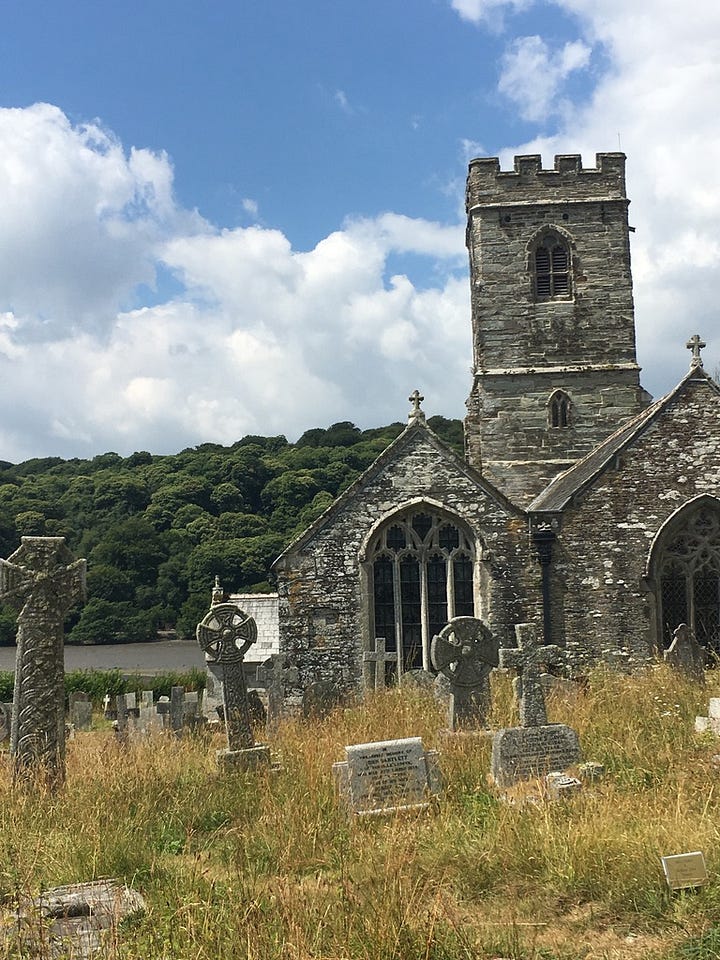
Some (most?) of you will be familiar with the scenery in Cornwall: many television shows and movies exported around the world capture it’s charming fishing villages or rugged coastal cliffs: Doc Martin, Poldark, Beyond Paradise; Fisherman’s Friends and its sequel, Saving Grace, Ladies in Lavender (Maggie Smith and Judy Dench), James Bond-Die Another Day, Mansfield Park, About Time, Rebecca, Johnny English, Straw Dogs, and so many more.1
Seven hours after leaving home we arrived in Charlestown, a place everyone else in the world knows about who has seen any of the aforementioned shows, most recently Poldark. But we never saw Poldark so had no idea how well-known it is. And it was bustling on the gorgeous warm spring afternoon. The various bars and pubs were pumping out dance-worthy tunes, and ice cream cones were walking in groups everywhere. After a short walk around the waterfront village, we headed up the Coast path towards the next village in Carylon Bay (pronounced ‘Car-line’). In the usual way, once we had gone up a steep section of path, we lost all the crowds, and it was just us and the fresh gentle breeze blowing up the cliff.
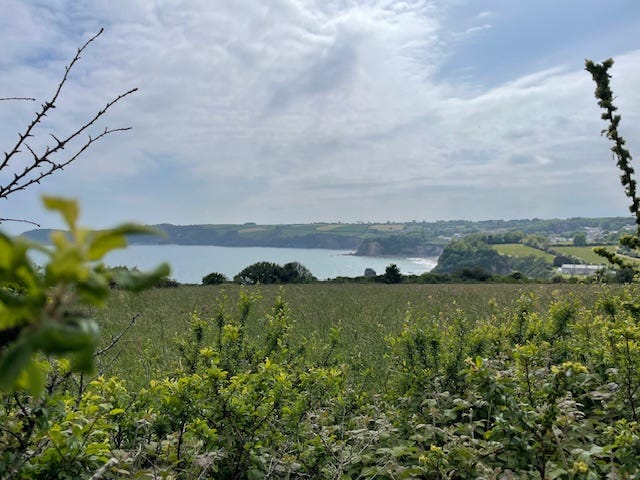
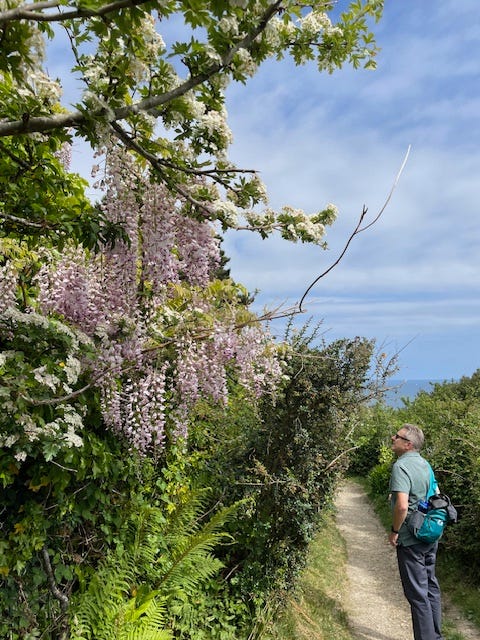
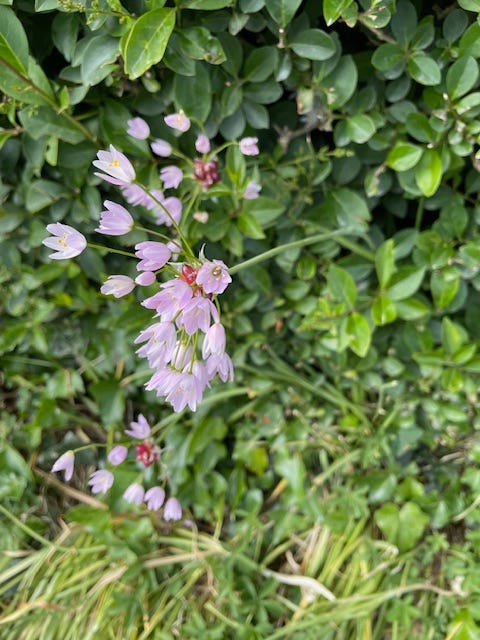

Because—as you know—I am currently slightly plant obsessed, my photos for the weekend reflect that. And to be fair, it was a gorgeous spring weekend with flowers blooming EVERYWHERE. I couldn’t help myself! The purple, pinky-pink and fiery fuschia-coloured rhododendrons and azaleas were blooming everywhere we drove, both in tamed gardens and wildly decorating the forests we drove through.
Our hotel turned out to have a fabulous garden alongside its former water wheel/mill function. Twin bonuses: for Pete, a stream; for me, abundant plants!
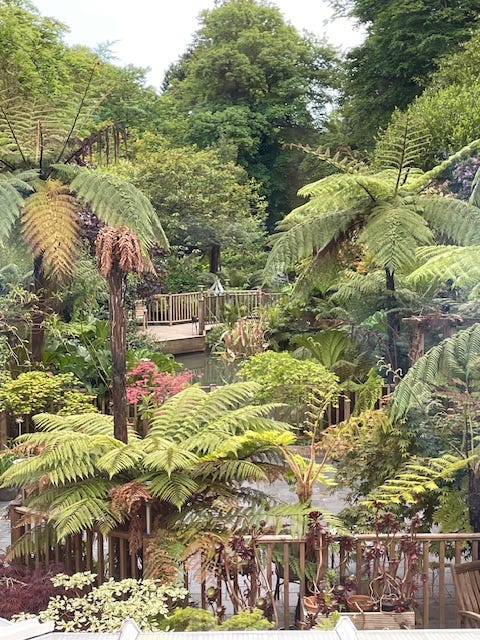
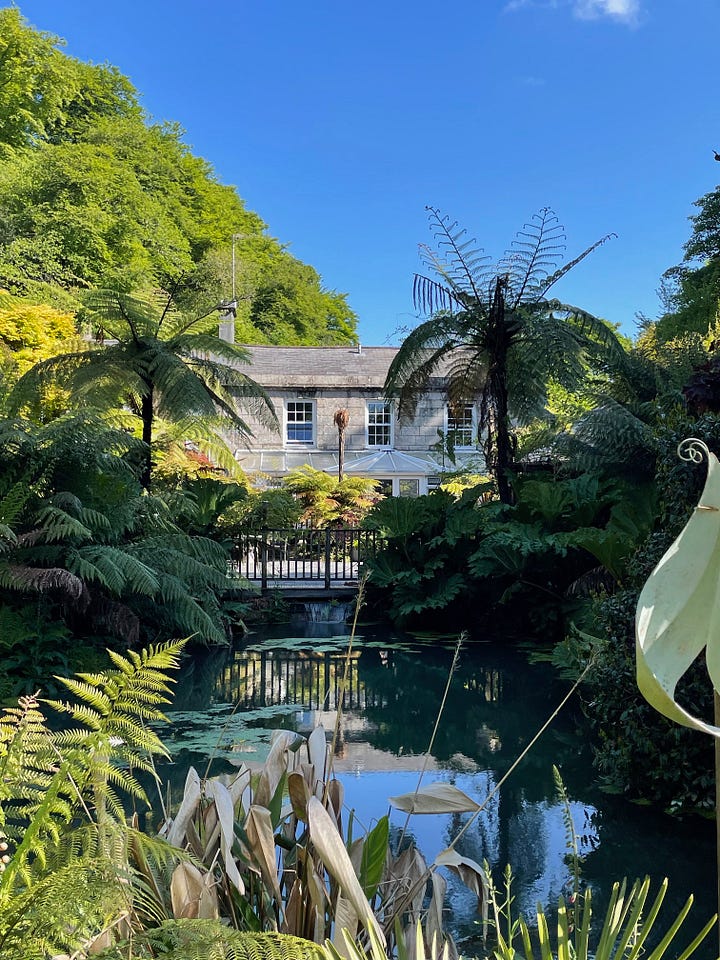

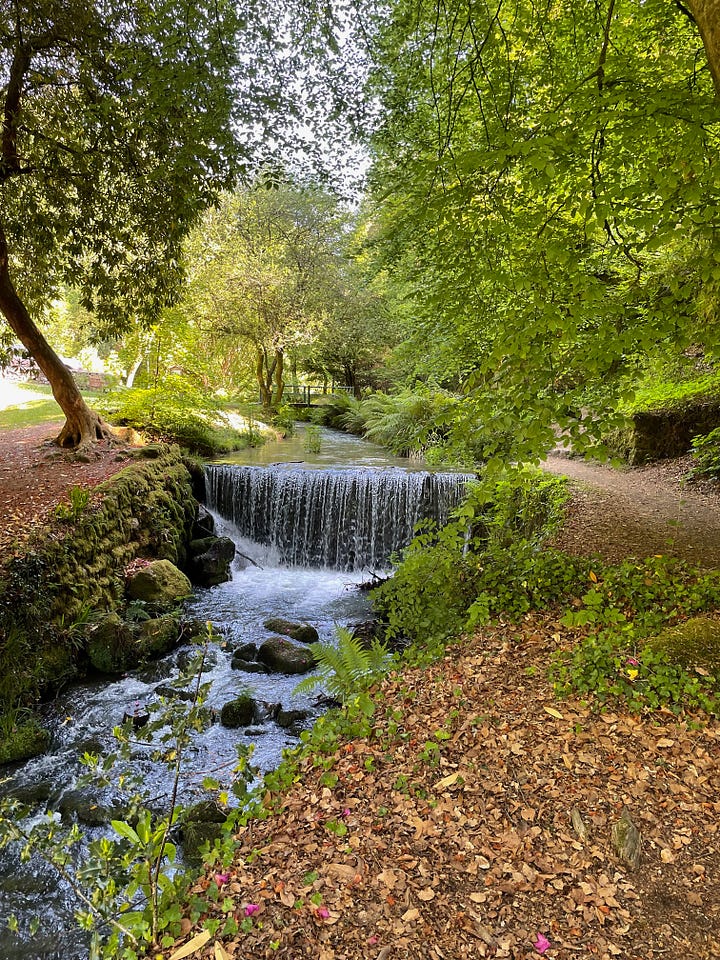
That evening we went to Fowey (pronounced ‘Foy’) for dinner. Like most of the villages along the south coast of Cornwall, Fowey began as a fishing village at the bottom of a steep narrow valley opening at the river mouth. The main commerce is adjacent to the harbour, and the streets and housing in the village line the steep hillslopes, tumbling down to the water. Narrow lanes are impassible for modern car and truck traffic. Most of the more picturesque villages have giant car parks at the top of the cliffs, with a series of steps or steep streets to walk down into the village.
Some of Pete’s family have lived in and around Fowey for a couple of generations, so it is a place we have visited often. Although now filled with touristy shops and restaurants, on this warm spring evening, it was reasonably quiet and we had a delicious dinner with a view of the harbour.

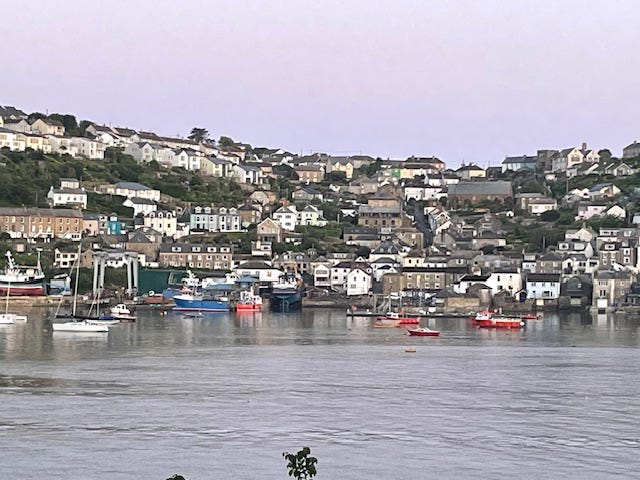
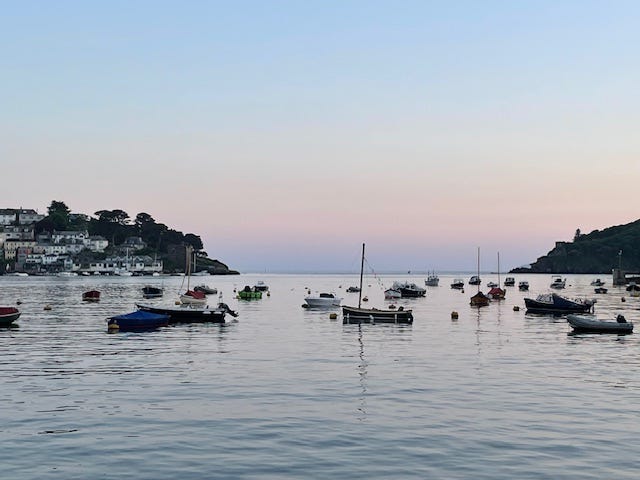
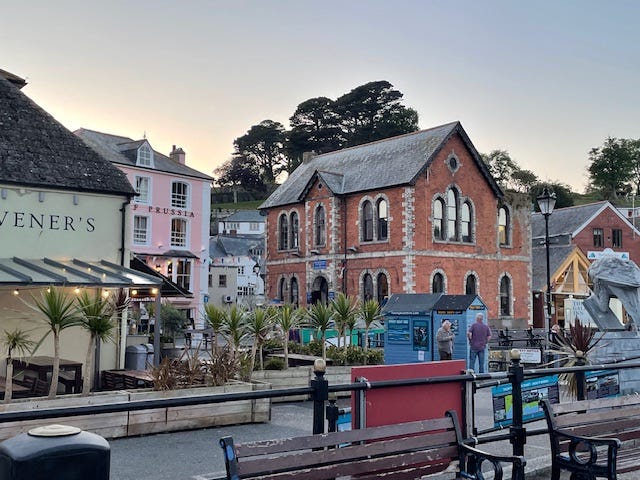
On Sunday we wandered the Lost Gardens of Heligan. The extensive gardens were developed between 1776 and 1914 to include a pineapple garden, flower garden, melon garden, an Italian garden, a Japanese garden (which has now been turned into a tropical jungle), and huge numbers of imported exotic rhododendrons. There were numerous trails and riding paths that wound around the wilder parts of the 200 acres.
Like so many places in Britain during and after the first world war, farms and manor houses were nearly abandoned or their productivity was cut short as the men left to fight in the war. In the absence of anyone tending the gardens, the wild brambles and ivy foliage overtook the manicured gardens and in time, the acreage was covered over and the well-tended gardens hidden from view. Between 1914 and 1990 no one knew they existed. In 1990, the derelict gardens were rediscovered by Tim Smit (of Eden Project fame) and John Willis, a descendant of the original Tremayne family owner.
Over the last 30 years they have been uncovering more and more of the gardens and restoring the working and productive acreage that the pre-war gardening teams had created. I was enchanted with the kitchen gardens and the clever frames they created to bring on plants earlier in the season. For example, starting in late winter with removable glass frames over the soil to encourage warming of the soil for new seedlings. These glass frames are replaced later in the spring with chicken wire frames to keep the young plants safe from birds and other critters. Or using bamboo-louvered frames that can be adjusted up and down to provide ventilation and adjustable screening.
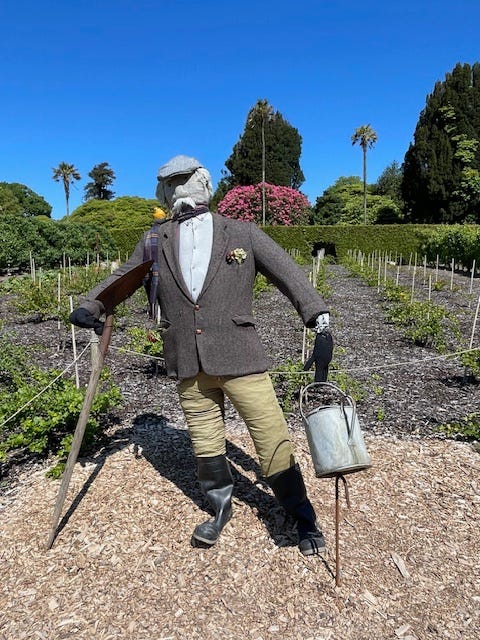

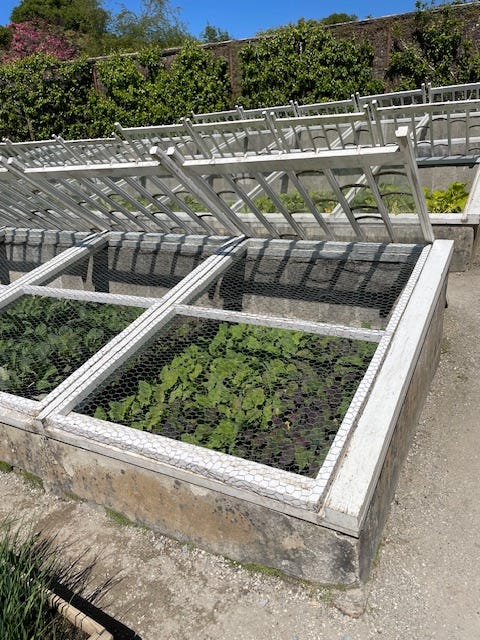
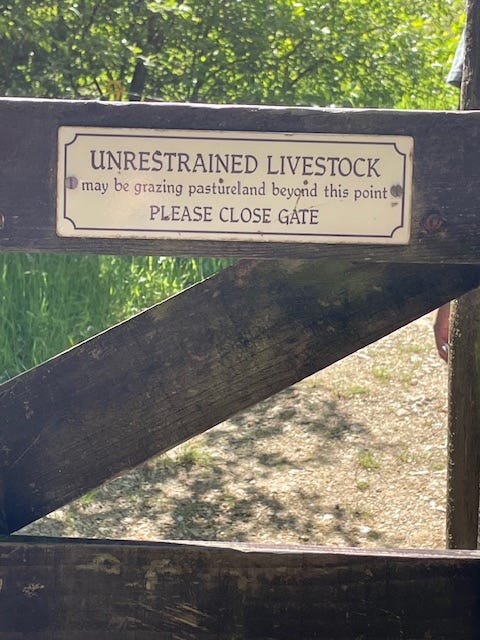
Okay, okay, enough about plants and gardens and unrestrained livestock. 🤣
Well, just a couple more notes: One, this is the week of Chelsea Garden show in London, so not just me that is plant obsessed this week. Two, I am off to Glyndebourne to see the opera Barber of Seville on Thursday. Which means about the time this comes out I will be a few glasses of bubbly in and enjoying the first Act of Il Barbieri! There is a less than 20% chance of rain so keep your fingers crossed for us please!
Until next week,
xoxo Sabrina
Clicking the little ❤️ button helps other people find this, and triggers a little happy dance! 💃
If you know anyone who might like to read these posts, feel free to send this one their way. Just click this button here:
And if you aren’t subscribing already, here’s the button for doing that (it’s free!):
https://en.wikipedia.org/wiki/Cornwall_film_locations

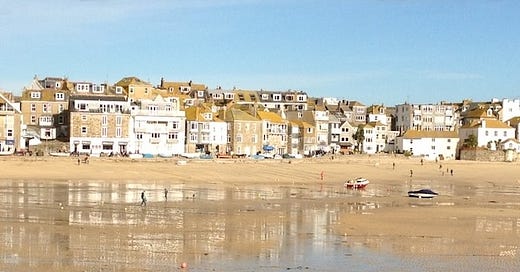



You have introduced me to another type of “archiological dig” - one to unearth a garden and grounds. Thanks for including the link to the lost garden. I like the way they also honor the workers who tended it because we don’t often know or understand the work that goes into creating such beauty.
The colours of the plants and flowers in the photos is incredible! Isn't nature just amazing? 😍 So glad you had a lovely trip, if a bit of a trek. I have family in St Ives and they told me it is very popular with artists because of the light? Another reason to love that part of the world 😊